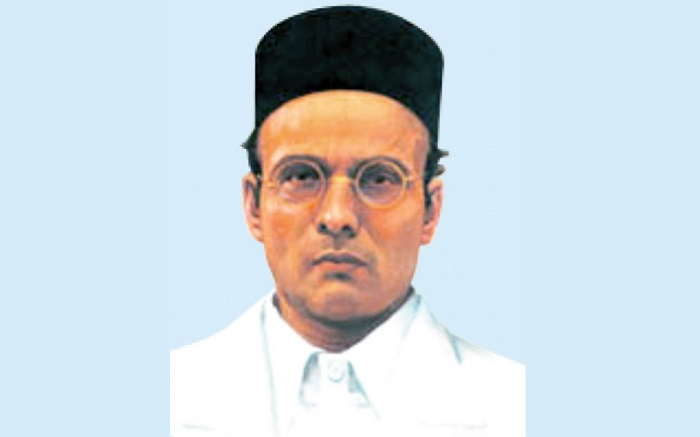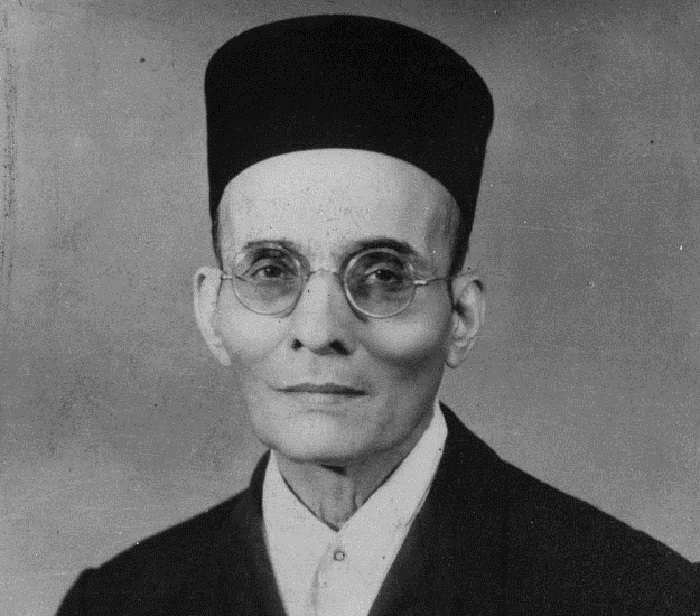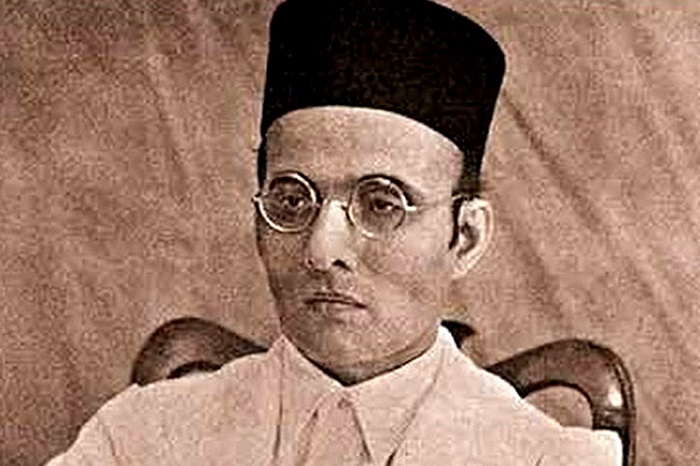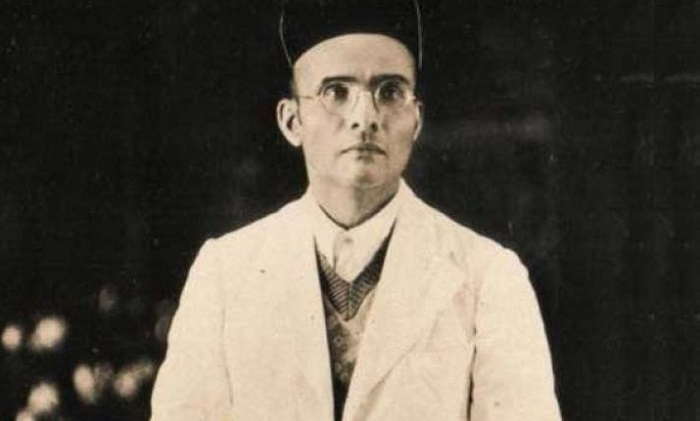Fast Facts
Birth: 28 May 1883
Place: Bombay Presidency, British India
Death: 26 February 1966
Place: Bombay, India
Profession: Lawyer, politician, writer, and activist
Father: Damodar Savarkar
Mother: Radhabai Savarkar
Siblings: Ganesh, Mainabai, and Narayan
Spouse: Yamunabai
Children: Vishwas, Prabhakar, and Prabhat Chiplunkar
Vinayak Damodar Savarkar was an Indian nationalist, who was a prominent member of a political party and nationalist organization, ‘Hindu Mahasabha.’ Savarkar, who was a lawyer by profession, was also a passionate writer as he had penned down many poems and plays. With his forceful oration and writing abilities, Savarkar inspired many as his ideology and philosophy were aimed at achieving social and political unity among Hindus. The term ‘Hindutva,’ which is a form of Hindu nationalism in India, was popularized by Savarkar through one of his works in 1921. A fierce critic of Mahatma Gandhi and the Indian National Congress, Savarkar was initially accused of Gandhi’s assassination, but was later acquitted. On February 1, 1966, Savarkar declared that he would observe fast until death and termed the act as ‘atmaarpan.’ He then stopped eating and even renounced medicines, which ultimately caused his death on February 26, 1966. Vinayak Damodar Savarkar was later immortalized through a couple of Indian movies. In 2003, the Indian Parliament honored Savarkar by unveiling his portrait.

Image Credit : https://myauraiya.wordpress.com/tag/vinayak-damodar-savarkar/
Childhood & Early Life
Vinayak Damodar Savarkar was born on May 28, 1883, at Bhagur in the Nashik District of Bombay Presidency, British India. He was born into a Brahmin Hindu family and spent his childhood with his siblings, Ganesh, Mainabai, and Narayan. At the age of 12, Savarkar led a group of students to drive away a horde of Muslims, who had caused trouble in his town. He was subsequently praised for his bravery, which earned him the nickname ‘Veer’ (courageous person).
Savarkar went on to become a revolutionary young man, with his older brother Ganesh playing an influential role in his teenage life. As a youngster, Savarkar organized a youth group and named it ‘Mitra Mela.’ He used the group to organize revolutionary activities as he was inspired by radical political leaders like Lala Lajpat Rai, Bal Gangadhar Tilak, and Bipin Chandra Pal. Meanwhile, he enrolled himself at ‘Fergusson College’ in Pune and completed his degree.
He was then offered a scholarship to study law in England and was subsequently helped by Shyamji Krishna Varma, who sent him to England to pursue his studies in law. After enrolling at ‘Gray’s Inn law college,’ Savarkar took shelter at ‘India House,’ a student residence in North London. While in London Savarkar inspired his fellow Indian students and formed an organization called ‘Free India Society,’ which encouraged Indians to fight for complete freedom from the British.
Savarkar thought of a guerrilla war on the lines of the ‘revolt of 1857’ in order to attain independence. He came up with a book titled ‘The History of the War of Indian Independence,’ which inspired a host of Indians to fight for their freedom. Though the book was banned by the British, it attained great popularity in many countries. Savarkar also printed a manual on making bombs and guerrilla warfare, which he distributed among his friends. In 1909, Savarkar stated that he would provide full legal defense to his friend Madan Lal Dhingra, who was accused of murdering a British Indian army officer named Sir William Hutt Curzon Wyllie.
The French Escapade
Back in India, Savarkar’s brother Ganesh had organized a protest against the ‘Indian Councils Act 1909’ (Minto-Morley Reforms). Following the protest, the British police claimed that Vinayak Savarkar had plotted the crime and hence issued an arrest warrant against him. In order to evade arrest, Savarkar escaped to Paris, where he took shelter at Bhikaiji Cama’s residence. However, he was arrested by the British police on March 13, 1910, which irked the French government as the British authorities hadn’t initiated appropriate legal proceedings to arrest Savarkar from Paris.

Image Credit : https://vikasacharya.wordpress.com/2015/11/24/vinayak-damodar-savarkar/
In 1911, the Permanent Court of International Arbitration, which was handling the dispute between the British authorities and the French government, gave its verdict. The verdict came out against Savarkar, and he was sent back to Bombay, where he was sentenced to 50 years of imprisonment. On July 4, 1911, he was taken to the Andaman and Nicobar Islands where he was locked up at the infamous ‘Cellular Jail’ (Kala Pani). Though he faced frequent mistreatment and torture, Savarkar used his time in the jail by teaching some of his fellow prisoners to read and write. He also obtained permission from the government to begin a basic library in the jail.
Nationalism & the Hindu Mahasabha
During his time in prison, Savarkar wrote an ideological pamphlet called ‘Hindutva: Who is a Hindu?’ The work was smuggled out of prison and was subsequently published by Savarkar’s supporters. ‘Hindutva’ influenced many Hindus as it described a Hindu as a patriotic and proud inhabitant of ‘Bharatavarsha’ (India). It also described Buddhism, Jainism, Sikhism, and Hinduism as one and the same and supported the creation of ‘Akhand Bharat’ (United India or Greater India).
Though a self-proclaimed atheist, Vinayak Savarkar took pride in being called a Hindu as he described it as a political and cultural identity. While he called for the unification of Hinduism, Buddhism, Jainism, and Sikhism, he did not support the existence of Muslims and Christians in India as he called them a ‘misfit’ in India. On January 6, 1924 Savarkar was released from jail, post which he played an important role in the creation of ‘Ratnagiri Hindu Sabha,’ which aimed at preserving social and cultural heritage of the Hindus.
In 1937, Vinayak Savarkar became the president of the ‘Hindu Mahasabha.’ Around the same time, Muhammad Ali Jinnah had declared Congress’ rule as ‘Hindu Raj,’ which had worsened the already rising tension between the Hindus and the Muslims. These conflicts made people take note of Vinayak Savarkar’s proposal of creating a Hindu nation, which increased his popularity among many other Hindu nationalists. As the president of ‘Hindu Mahasabha,’ Savarkar encouraged Hindus to support British in the Second World War, which in turn would help the Hindus get familiar with the nuances of war.

Image Credit : https://www.news18.com/news/india/shiv-sena-demands-bharat-ratna-for-veer-savarkar-1097081.html
Views on the INC & Gandhi
Vinayak Savarkar was a fierce critic of the Indian National Congress (INC) and Mahatma Gandhi. He opposed ‘Quit India Movement’ and later objected INC’s acceptance of India’s partition. Instead of dividing India into two separate nations, Savarkar proposed the co-existence of two nations in one country. Also, he criticized Mahatma Gandhi’s policy of appeasement with the Muslims during the ‘Khilafat Movement.’ Furthermore, he called Gandhi a ‘hypocrite’ for supporting violence against Germany during the Second World War. A few articles state that Savarkar thought of Gandhi as a naive leader with a ‘narrow and immature head.’
Philosophy
Despite being a self-proclaimed atheist, Vinayak Savarkar had whole-heartedly encouraged the concept of Hinduism as he considered Hinduism as a political and cultural identity and not just as a mere religion. He always had a vision of creating ‘Hindu Rashtra’ or United India that would encompass Hindus, Jains, Buddhists, and Sikhs. However, he did disapprove thousands of orthodox beliefs that are associated with the religion.
Savarkar’s political philosophy was quite unique as it had elements of various ethical, theological, and philosophical theories. In other words, his political philosophy was basically a mixture of humanism, rationalism, universalism, positivism, utilitarianism, and realism. He also acted against some of India’s social evils, such as caste discrimination and untouchability that were prevalent during his time.

Image Credit : https://www.indiatvnews.com/politics/national/veer-savarkar-freedom-fighter-and-early-proponent-of-hindutva-24222.html
Other Major Works
Some of Savarkar’s most important literary works include ‘Mazi Janmathep,’ ‘Kamala,’ and ‘The Indian War of Independence.’ Many of his works were inspired by the time he had spent in prison. For instance, his book ‘Kale Pani’ narrates the struggles of Indian Independence activists in the infamous cellular jail of Andaman and Nicobar islands. He also came up with a political critique of Mahatma Gandhi’s politics titled ‘Gandhi Gondhal.’ He is also known for penning various poems like ‘Jayostute’ and ‘Sagara Pran Talmalala.’ He is also credited with many neologisms, such as ‘Hutatma,’ ‘Digdarshak,’ ‘Doordhwani,’ ‘Sansad,’ ‘Tanklekhan,’ ‘Saptahik,’ ‘Mahapaur,’ and ‘Shatkar’ among others.
Death & Legacy
Just before his death, Vinayak Damodar Savarkar wrote an article called ‘Atmahatya Nahi Atmaarpan.’ The article gave an insight on fast until death (atmaarpan) and stated that one should be allowed to end his or her life when one’s main objective of life is achieved. On February 1, 1966, Savarkar declared that he would observe fast until death and refused to eat. On February 26, 1966, he breathed his last at his Bombay residence. His home and other possessions are now preserved for public display.
In 1996, actor Annu Kapoor played Vinayak Savarkar in a Malayalam-Tamil bilingual film titled ‘Kaalapani.’ In 2001, Savarkar’s biopic titled ‘Veer Savarkar’ was released after being in production for many years. Savarkar was portrayed by actor Shailendra Gaur. In 2003, the Indian Parliament honored Savarkar by unveiling his portrait.


